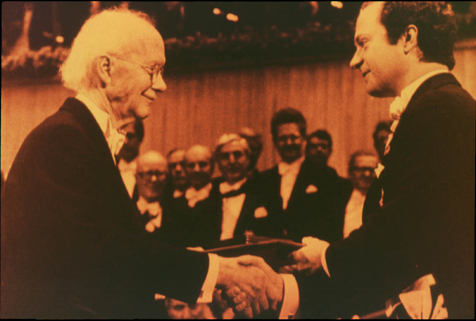
Faculty Research 1980 - 1989
Characterization of a genetic difference in the platelet aggregation response of two inbred mouse strains, C57BL/6 and C3H/He.
Document Type
Article
Publication Date
1987
Keywords
Arteriosclerosis: ge, Atherosclerosis: ge, Female, Male, Mice, Mice-Inbred-C3H: ge, Mice-Inbred-C57BL: ge, Platelet-Aggregation, Species-Specificity, SUPPORT-NON-U-S-GOVT, SUPPORT-U-S-GOVT-P-H-S
First Page
181
Last Page
190
JAX Source
Atherosclerosis 1987 Apr; 64(2-3):181-90.
Grant
HL28943, HL32087, RR05467
Abstract
An in vitro platelet aggregation assay has been used to characterize the platelet response of two inbred mouse strains, C57BL/6J and C3H/J. Arachidonic acid, ADP, ristocetin, and collagen, but not epinephrine, were effective inducers of platelet aggregation in C57BL/6 mice. In C3H mice, however, platelets responded differently to some, but not all, inducers of platelet aggregation. The difference between the two strains was particularly striking for arachidonic acid; at 0.375 microM arachidonic acid, platelets from C57BL/6 mice aggregated well, but platelets from C3H mice failed to aggregate. The two strains also differed in serotonin release from platelets. When the pool of platelet serotonin was labeled by incubating platelets with [14C]serotonin, the amount of label subsequently released from platelets in response to 0.375 microM arachidonic acid was 20.5% +/- 2.5 SE for C57BL/6 mice and 1.5% +/- 1.5 SE for C3H mice. The platelets from F1 progeny of a cross between C57BL/6 and C3H mice were indistinguishable in aggregation response from the C57BL/6 parent. The defect in aggregation response found in C3H mice appears to reside in the platelets rather than in the plasma. Experiments which involved adding the plasma of one strain to the washed platelets of the other strain indicated that C57BL/6 platelets aggregated well whether they were resuspended in plasma from C57BL/6 or C3H mice, while C3H platelets failed to aggregate regardless of the origin of the plasma. Strain C57BL/6 is susceptible to diet-induced formation of atherosclerotic lesions, but strain C3H is resistant to lesion formation. This genetic difference in atherosclerosis susceptibility is not related to the genetic difference in platelet aggregation since a recombinant inbred strain, BXH-9, is susceptible to atherosclerosis like the C57BL/6 parent but has the reduced platelet aggregation response of the C3H parent.
Recommended Citation
Paigen B,
Kovats SE,
Chapman MH,
Lin CY.
Characterization of a genetic difference in the platelet aggregation response of two inbred mouse strains, C57BL/6 and C3H/He. Atherosclerosis 1987 Apr; 64(2-3):181-90.

